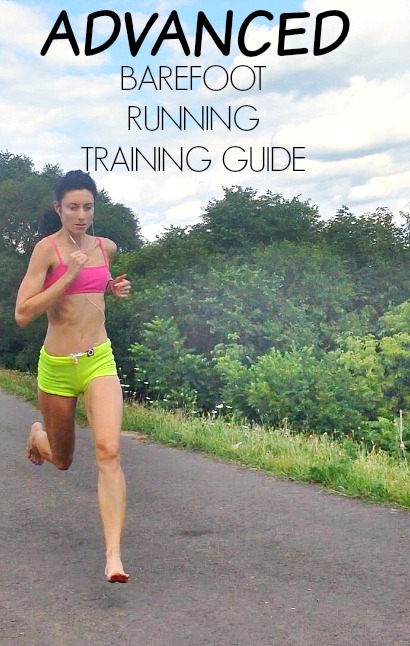You already know that barefoot running offers a host of proven health perks, such as toning your feet, ankles, legs and core, but it also naturally encourages a forefoot strike landing. This is why your heel strike is not hard to change, because running barefoot is the best sensory aid in helping you avoid heel strike. Also, I would advise that for those planning to fully convert to minimalism, I would suggest running barefoot first, simply because your brain needs to learn to process the feeling of the ground through activating the nerves in the feet essential in aiding proper withdrawal, reactive reflexes needed for safe running.
The golden rule to develop a proper forefoot strike is to run barefoot before running in shoes! So for starters, here’s a barefoot running training schedule that will keep your feet strong and young and curb your heel striking habits.
Advanced Barefoot Running Training Schedule
Step 1. Always Walk Barefoot First. Have some spare time? Go for a barefoot stroll. Walking barefoot everyday outside, especially on uneven surfaces will strengthen every angle of your feet and ankles, and its also pleasurable, and takes away your inflammation. For the first week, walk barefoot for 20-25 mins. The second week, walk barefoot for 25-30 mins. Week 3, increase to 30-35 mins and then week 4, increase your barefoot walking time to 35-40 mins.
Step 2. Barefoot Running/Walking Intervals.
Always warm up the muscles in your feet by walking barefoot for 10 mins. Next, run barefoot at your goal race pace for 1 min and focus on interacting smoothly with the ground and avoid pushing off with your foot. Then, walk for 2 mins. Repeat this interval for 10-15 mins, then walk barefoot for 10-15 mins for cool down. Do this for 2 weeks, or longer if you want.
Step 3. Increase Duration of Barefoot Running Time.
Increase your barefoot running time to 3 mins at a pace faster than your goal race pace. Then walk barefoot for 1:30 mins. Do this interval for 15 mins and over a 2-3 week period, until you feel you can run barefoot for more than 3 mins.
Another thing I need to stress is to refrain from stretching before running. Stretching may actually do more harm than good. Here are more details about why stretching before running is harmful.
And finally, maintaining your forefoot strike can be a challenge in certain running shoes. Discover which shoes are effective for helping you avoid heel strike.
You Might Also Like:
How Heel Strike Running Causes CECS
3 Factors that Influence Running Foot Strike
HBO Segment on Barefoot Running Benefits
Only Concentrate on One Thing at a Time When Running
Why the Body is Made for Forefoot Running
Bretta Riches
BSc Neurobiology; MSc Biomechanics candidate, ultra minimalist runner & founder of RunForefoot. I was a heel striker, always injured. I was inspired by the great Tirunesh Dibaba to try forefoot running. Now, I'm injury free. This is why I launched Run Forefoot, to advocate the health & performance benefits of forefoot running and to raise awareness on the dangers of heel striking, because the world needs to know.
Latest posts by Bretta Riches (see all)
- Cushioned Running Shoes Found to Be Bad for Ankles - 23/04/2024
- Forefoot Running and Achilles Pain - 19/04/2024
- Does Foot Strike Really Matter in Running? YES! - 17/04/2024


Great article. Only person that I could find that tell you a plan great. What about when you reach three mins? How to you progress?